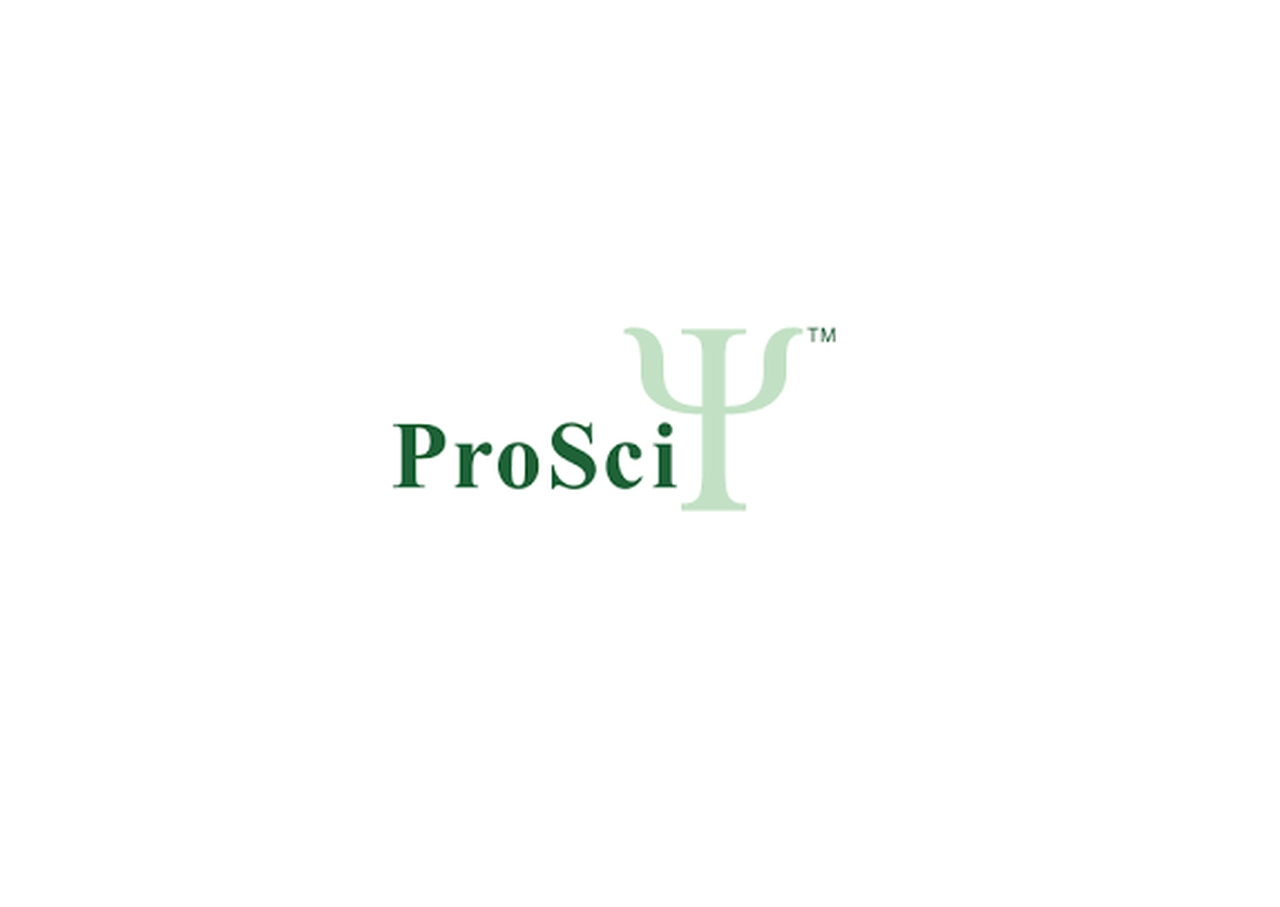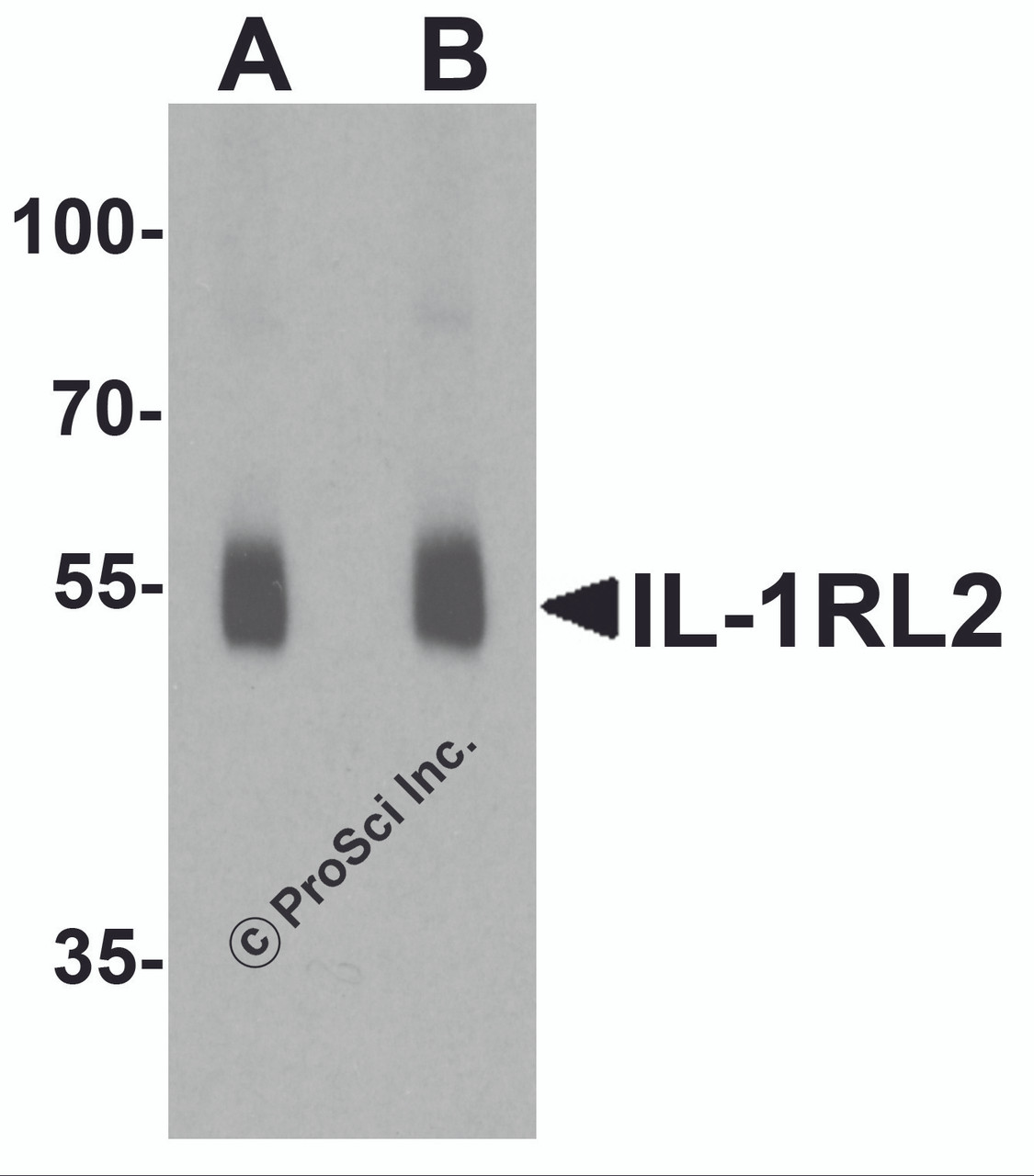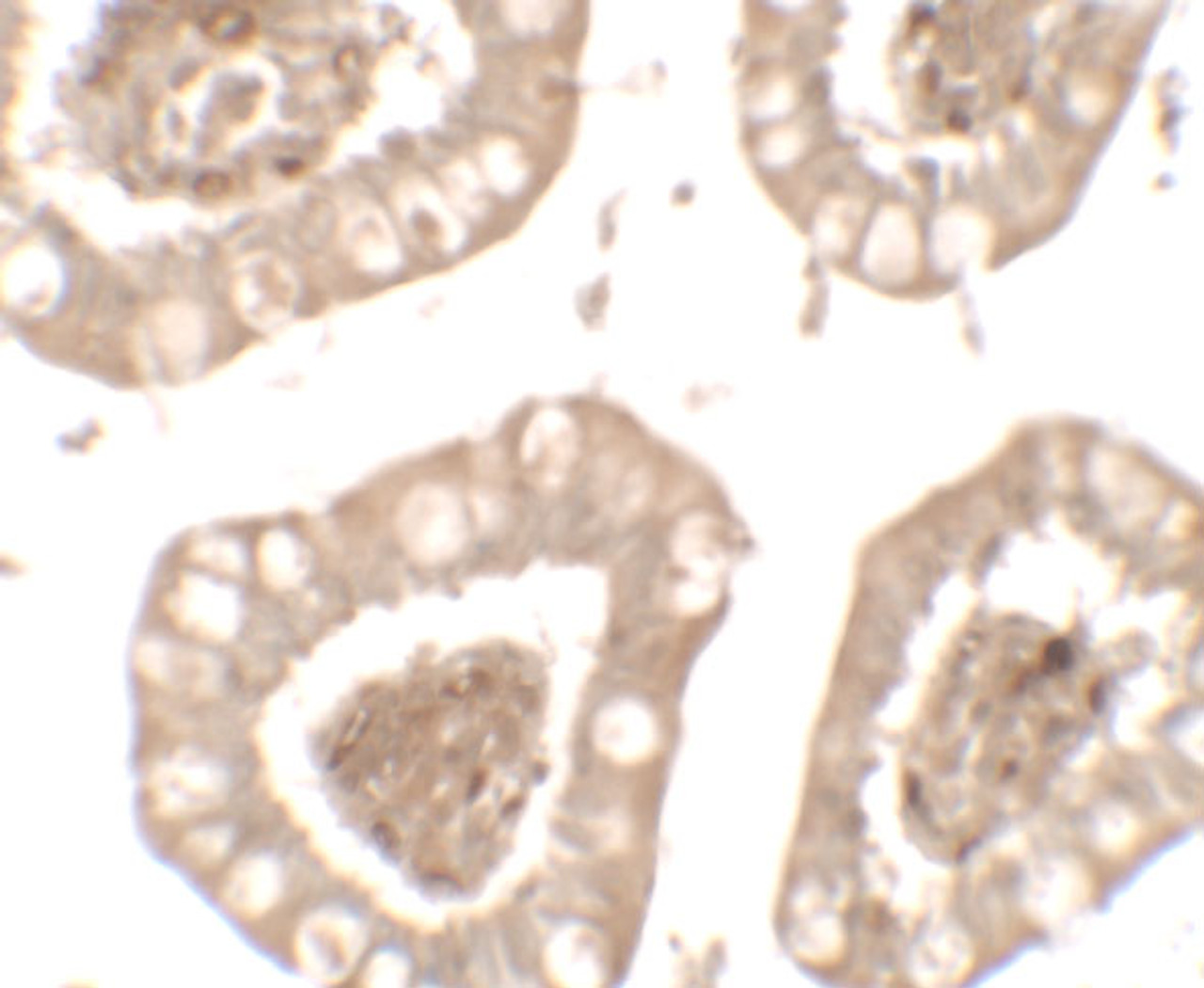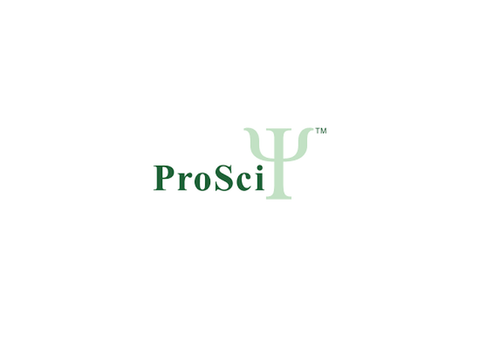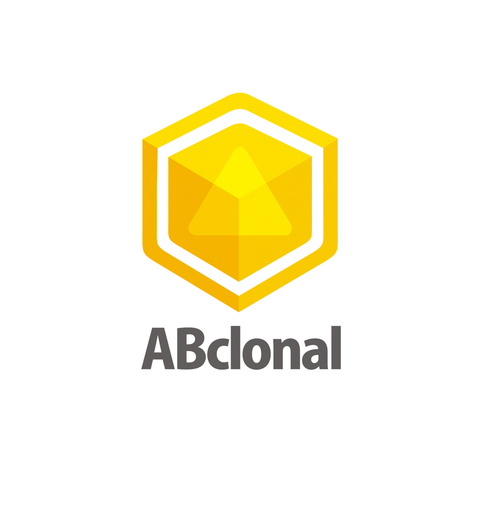Product Description
IL-1RL2 Antibody | 7501 | ProSci
Host: Rabbit
Reactivity: Human, Mouse, Rat
Homology: N/A
Immunogen: IL-1RL2 antibody was raised against a 16 amino acid peptide near the center of human IL-1RL2.
The immunogen is located within amino acids 260 - 310 of IL-1RL2.
Research Area: Immunology
Tested Application: E, WB, IHC-P, IF
Application: IL-1RL2 antibody can be used for detection of IL-1RL2 by Western blot at 1 - 2 μg/ml.
Antibody validated: Western Blot in human samples; Immunohistochemistry in human samples and Immunofluorescence in human samples. All other applications and species not yet tested.
Specificiy: IL-1RL2 antibody is human, mouse and rat reactive. At least three isoforms of IL-1RL2 are known to exist; this antibody will detect all three isoforms. IL-1RL2 antibody is predicted to not cross-react with IL-1R or IL-1RL1.
Positive Control 1: Cat. No. 1308 - Human Small Intestine Tissue Lysate
Positive Control 2: Cat. No. 11-801 - Human Small Intestine Tissue Slide
Positive Control 3: N/A
Positive Control 4: N/A
Positive Control 5: N/A
Positive Control 6: N/A
Molecular Weight: Predicted: 61 kDa
Observed: 55 kDa
Validation: N/A
Isoform: N/A
Purification: IL-1RL2 antibody is affinity chromatography purified via peptide column.
Clonality: Polyclonal
Clone: N/A
Isotype: IgG
Conjugate: Unconjugated
Physical State: Liquid
Buffer: IL-1RL2 antibody is supplied in PBS containing 0.02% sodium azide.
Concentration: 1 mg/mL
Storage Condition: IL-1RL2 antibody can be stored at 4˚C for three months and -20˚C, stable for up to one year.
Alternate Name: IL-1RL2 Antibody: IL-36R, IL1RRP2, IL-1Rrp2, IL1R-rp2, Interleukin-1 receptor-like 2, IL-36 receptor, IL-36R
User Note: Optimal dilutions for each application to be determined by the researcher.
BACKGROUND: IL-1RL2 is a member of the interleukin 1 receptor family, but it is incapable of binding to interleukin 1 alpha and interleukin 1 beta with high affinity (1) . Together with IL-1RAcP, it can bind members of the IL-36 cytokine family, leading to activation of the NF-kappaB pathway (2) . IL-1RL2 can also bind to IL-1F10, resulting in a decreased product of Th17 cytokines in response to immunological or LPS challenge, suggesting that one potential role of IL-1RL2 may be to modulate the immune and inflammation response (3) .
 Euro
Euro
 USD
USD
 British Pound
British Pound
 NULL
NULL

